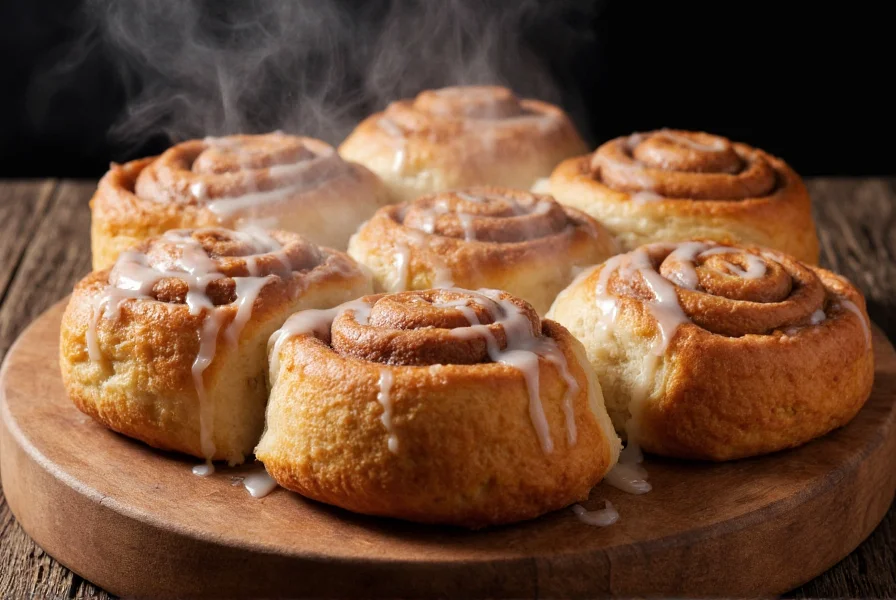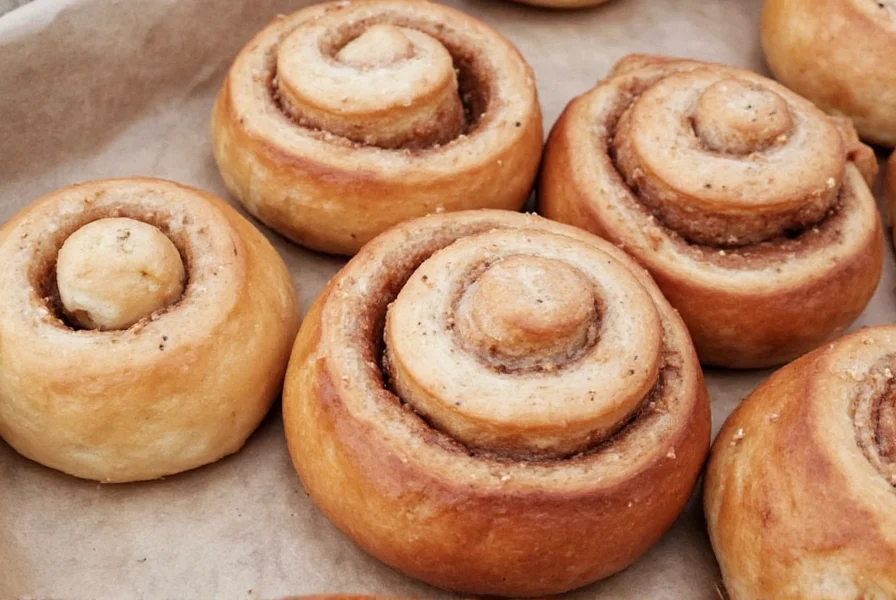Every year on October 4th, baking enthusiasts and pastry lovers celebrate Cinnamon Bun Day by preparing fresh batches of this iconic treat. The holiday has gained popularity across North America and Europe, with many bakeries offering special promotions and limited-edition flavors to mark the occasion.
The Origins of Cinnamon Bun Day
While the exact origins of Cinnamon Bun Day remain somewhat unclear, food historians believe it emerged from the growing popularity of Swedish "kanelbullar" (cinnamon buns) in the late 20th century. Sweden has a strong tradition of "fika"—a coffee break accompanied by pastries—and cinnamon buns are central to this cultural practice.
The date October 4th was likely chosen to fall between other major food holidays, creating a dedicated space for this specific pastry celebration. Unlike many food holidays that originated as marketing campaigns, Cinnamon Bun Day has organically grown through community celebration and social media sharing.
| Country | Local Name | Traditional Variations |
|---|---|---|
| Sweden | Kanelbullar Day | Cardamom-infused dough with pearl sugar topping |
| United States | Cinnamon Roll Day | Larger portions with cream cheese frosting |
| Canada | Cinnamon Bun Day | Often includes maple syrup variations |
| Germany | Zimtschnecke Tag | Denser dough with streusel topping |
How Different Cultures Celebrate
Cinnamon Bun Day takes on unique expressions across different regions. In Sweden, where "kanelbullar" are practically a national institution, bakeries often see lines of customers waiting for their special October 4th offerings. Many Swedish workplaces incorporate the day into their "fika" culture with office-wide celebrations.
In North America, the celebration has grown significantly over the past decade. Major bakery chains frequently introduce limited-time cinnamon bun variations, while independent bakeries host special events. Social media platforms light up with #CinnamonBunDay posts featuring homemade creations and bakery finds.

Creating the Perfect Cinnamon Bun for Celebration
Whether you're a baking novice or experienced pastry maker, crafting exceptional cinnamon buns for Cinnamon Bun Day requires attention to key elements. The foundation is a rich, slightly sweet yeast dough that's tender but holds its shape. Many professional bakers recommend using a combination of bread flour and all-purpose flour for optimal texture.
The cinnamon-sugar filling deserves special consideration. Quality ground cinnamon makes a significant difference—Ceylon cinnamon offers a more delicate flavor while Cassia provides that familiar bold cinnamon taste. Adding a touch of espresso powder to the filling can deepen the flavor profile without making the buns taste like coffee.
For those celebrating Cinnamon Bun Day who want to try something beyond the traditional recipe, consider these variations:
- Apple Cinnamon Buns: Incorporate finely diced apples into the filling
- Maple Pecan: Replace sugar with maple syrup and add toasted pecans
- Orange Zest: Add fresh orange zest to the dough for citrus notes
- Vegan Option: Use plant-based butter and milk alternatives
Why October 4th Matters for Pastry Lovers
October 4th serves as the perfect midpoint between summer's end and the holiday baking season. As temperatures cool in many regions, the warm, comforting aroma of baking cinnamon buns becomes particularly appealing. The timing also allows bakeries to transition from summer pastries to more substantial fall treats.
Food historians note that October has relatively few major food holidays compared to December or November, making Cinnamon Bun Day stand out in the culinary calendar. This strategic placement helps ensure the celebration receives proper attention rather than competing with numerous other food-focused observances.

Preserving Tradition While Innovating
While traditional cinnamon bun recipes remain popular for Cinnamon Bun Day celebrations, many bakeries and home cooks enjoy experimenting with new interpretations. The key to successful innovation lies in understanding the essential elements that make a cinnamon bun recognizable while thoughtfully introducing complementary flavors.
When developing new cinnamon bun variations for October 4th celebrations, consider these guidelines:
- Maintain the signature spiral shape that defines cinnamon buns
- Ensure the cinnamon flavor remains prominent
- Balance sweetness so it enhances rather than overwhelms
- Preserve the textural contrast between soft dough and filling
Many professional bakers recommend starting with a classic recipe before attempting variations. This approach helps develop an understanding of what makes an exceptional cinnamon bun, making innovations more successful.
Planning Your Cinnamon Bun Day Celebration
Whether you're hosting a gathering or simply treating yourself, thoughtful planning enhances your Cinnamon Bun Day experience. Consider these practical tips for October 4th:
- Prep ahead: Make dough the night before for morning baking
- Temperature matters: Allow dough to reach room temperature before rolling
- Fresh is best: Bake close to serving time for optimal texture
- Pairing suggestions: Serve with strong coffee or vanilla ice cream
- Storage tips: Freeze extras for future enjoyment
For those who prefer not to bake, researching local bakeries in advance ensures you can find fresh cinnamon buns on October 4th. Many establishments announce special Cinnamon Bun Day offerings on social media platforms.
Frequently Asked Questions About Cinnamon Bun Day
When is Cinnamon Bun Day officially celebrated?
Cinnamon Bun Day is officially celebrated on October 4th each year. This date has been consistently recognized by baking communities, food calendars, and culinary organizations as the dedicated day for honoring this beloved pastry.
What's the difference between cinnamon buns and cinnamon rolls?
While often used interchangeably, there are subtle differences. Cinnamon buns typically refer to the Swedish "kanelbullar" which are smaller, rounder, and often topped with pearl sugar. Cinnamon rolls are generally larger, made with a richer dough, and almost always include cream cheese frosting. The terms vary by region and cultural tradition.
How did Cinnamon Bun Day originate?
Cinnamon Bun Day likely emerged organically from Scandinavian baking traditions, particularly Sweden's strong "fika" culture. While no single person or organization claims to have created the holiday, it gained formal recognition through food calendars and baking communities in the early 2000s. The date of October 4th was established as the consistent celebration day.
Can I celebrate Cinnamon Bun Day if I have dietary restrictions?
Absolutely. Many bakeries now offer gluten-free, vegan, and reduced-sugar cinnamon bun options specifically for celebrations like Cinnamon Bun Day. Home bakers can easily adapt traditional recipes using alternative flours, plant-based fats, and natural sweeteners while maintaining the essential cinnamon bun experience.
What's the best way to store cinnamon buns after Cinnamon Bun Day?
For optimal freshness, store cooled cinnamon buns in an airtight container at room temperature for 1-2 days. For longer storage, freeze them individually wrapped before placing in a freezer bag. When ready to enjoy, thaw at room temperature and gently reheat in the oven at 300°F (150°C) for 5-7 minutes to restore that fresh-baked quality.











 浙公网安备
33010002000092号
浙公网安备
33010002000092号 浙B2-20120091-4
浙B2-20120091-4